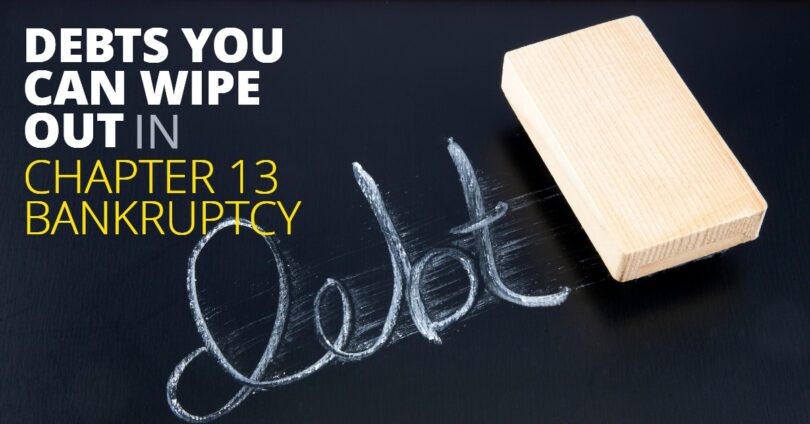Learn which debts you can discharge (wipe out) in Chapter 13 bankruptcy.
Many debtors file for Chapter 13 bankruptcy to reorganize their debts and catch up on their missed mortgage or car loan payments through an affordable repayment plan. If you successfully complete your repayment plan, you will receive a bankruptcy discharge that wipes out your personal liability for most of your debts. Read on to learn more about the types of debts you can eliminate in Chapter 13 bankruptcy.
Nonpriority General Unsecured Debts
For many bankruptcy debtors, most of their obligations fall into the nonpriority unsecured debt category. In general, nonpriority unsecured debts are the easiest obligations to eliminate in bankruptcy because they receive no special treatment under the law. If a nonpriority unsecured creditor wants to challenge your discharge, it must typically prove that you committed fraud when you obtained the debt.
The following are some of the most common nonpriority general unsecured debts you can wipe out in Chapter 13 bankruptcy:
- credit card obligations
- medical debt
- personal loans
- older income taxes that qualify as nonpriority debts
- most types of lawsuit judgments (be aware that a Chapter 13 discharge will not eliminate any debts arising out of willfully and maliciously injuring another person), and
- outstanding utility bills.
Liens You Cram Down or Strip in Chapter 13 Bankruptcy
In bankruptcy, certain obligations are referred to as secured debts because the creditor has a lien on a piece of property you pledged as collateral. Simply receiving a bankruptcy discharge doesn’t automatically eliminate a creditor’s lien from your property. Even if you receive a discharge, secured creditors retain their right to foreclose on or repossess your property if you default on the obligation.
But if you can satisfy the necessary requirements, Chapter 13 bankruptcy may allow you to modify or remove certain liens from your property through:
- a cramdown, or
- lien stripping.
Chapter 13 Bankruptcy Cramdown
A Chapter 13 bankruptcy cramdown allows you to reduce the principal balance (or interest rate) you owe on a secured loan. But you must satisfy certain requirements before you can cram down a secured debt.
If you qualify, the loan will be divided into secured and unsecured portions. You will pay the secured portion in full through your Chapter 13 plan. The unsecured portion will be treated as a nonpriority unsecured debt and any unpaid amount will be discharged at the end of your bankruptcy.
Lien Stripping
If your first mortgage (or other senior lien) balance exceeds the value of your home, you may be able to remove a junior lien (such as a second mortgage) from your home through a process called lien stripping. When you strip a junior lien, it’s treated as a nonpriority unsecured debt in Chapter 13 bankruptcy and wiped out when you receive your discharge.
Article reference:
https://www.thebankruptcysite.org/







